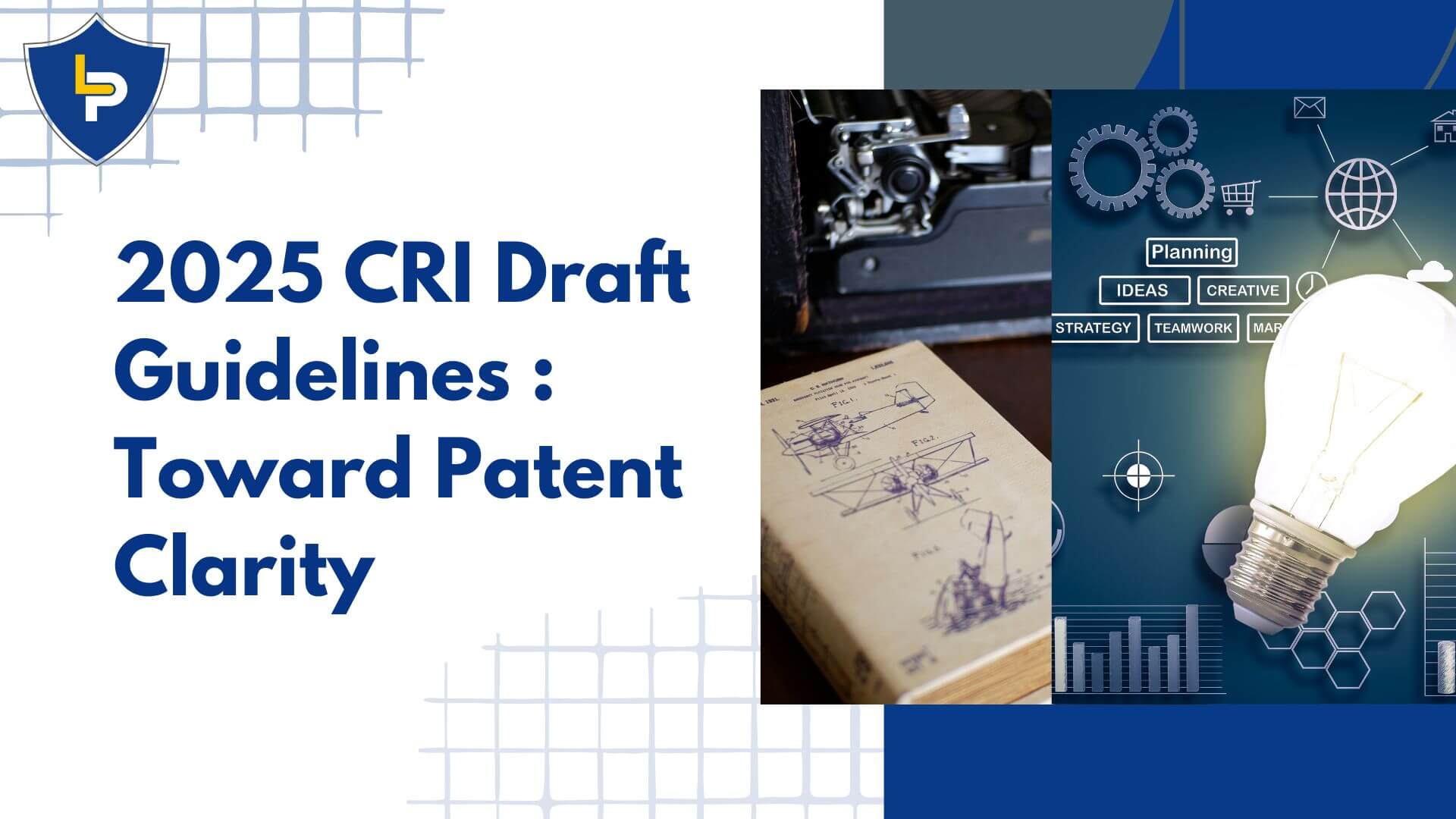Understanding the 2025 Draft Guidelines on CRIs: A Step Toward Patent Clarity

The Indian Patent Office has released the Draft Guidelines for Examination of Computer-Related Inventions (CRI), 2025, marking a pivotal moment in the evolution of India’s intellectual property framework. This release is expected to have far-reaching implications for innovators, software developers, and stakeholders in the tech industry, as it attempts to bring clarity and structure to the complex domain of software and technology patenting.
A Step Towards Regulatory Clarity
The primary objective of the draft guidelines is to streamline the examination process for Computer-Related Inventions and ensure consistency across decisions related to patentability. The new framework is specifically designed to assist patent examiners in interpreting Section 3(k) of the Indian Patents Act, 1970, which excludes mathematical methods, business methods, algorithms, and computer programs per se from patent eligibility.
Under these guidelines, examiners are encouraged to adopt a structured approach to determine whether a claimed invention demonstrates novelty, inventive step, and industrial applicability while also identifying elements that fall under the non-patentable category. It requires examiners to carefully analyze claims and identify the actual contribution of the invention. This step is crucial for reducing subjectivity in the examination process and improving the predictability of patent outcomes in India.
Categorization of CRI Claims
A notable feature of the 2025 draft is the classification of different types of CRI claims:
- Method or Process Claims: These typically involve algorithms, data processing, or business methods. They are subject to heightened scrutiny under Section 3(k) to determine if they are merely abstract ideas or contribute to a technical solution.
- Apparatus or System Claims: These focus on the hardware aspect and are generally more likely to be considered patentable if they demonstrate a tangible technical advancement.
- Computer Program Products: Claims related to programs stored on physical media (such as CDs or DVDs) are generally considered non-patentable in India, unless they are part of a novel hardware configuration or demonstrate a specific technical effect.
This categorization is intended to help both applicants and examiners draw a clear line between patent-eligible inventions and those falling under the exclusionary scope of Section 3(k).
Public Engagement and Stakeholder Feedback
In keeping with its transparent and participatory approach, the Indian Patent Office has invited public comments on the draft guidelines. This allows legal professionals, inventors, and industry stakeholders to share their views, propose changes, and ensure that the final version reflects a balanced and forward-thinking approach to CRI examination.
Such stakeholder involvement is vital, especially given India’s growing prominence as a global hub for software development and digital innovation. The feedback will likely influence how the guidelines are refined and implemented, ensuring they meet the needs of a rapidly evolving tech landscape.
Addressing Historical Challenges
India’s stance on Computer-Related Inventions has seen several revisions over the years, often resulting in legal ambiguities and inconsistent application of the law. Previous iterations of the CRI guidelines lacked coherence, leaving inventors and patent attorneys uncertain about the scope of patentable subject matter.
The 2025 draft aims to resolve these issues by aligning with global best practices, especially those followed in jurisdictions like the United States, Europe, and Japan. However, the Indian approach retains its unique emphasis on excluding abstract ideas and non-technical solutions, consistent with the spirit of Section 3(k).
A significant challenge the guidelines attempt to address is the definition of “technical advancement”. The lack of a standard interpretation has historically made it difficult for applicants to structure their claims effectively. By offering more detailed explanations and examples, the new guidelines provide better direction for both patent drafters and examiners.
The Road Ahead
The final adoption of the CRI Guidelines 2025 will play a crucial role in shaping the future of software and technology patents in India. By enhancing clarity, ensuring examiner consistency, and encouraging stakeholder participation, these guidelines promise a more reliable and efficient patent regime.
As the Indian economy continues to embrace digital transformation, fostering innovation in emerging technologies such as artificial intelligence, blockchain, and IoT, the need for a robust and transparent IP framework has never been greater. The Computer-Related Invention Guidelines 2025 are a timely and necessary step toward making India’s patent system more accessible and globally competitive.
